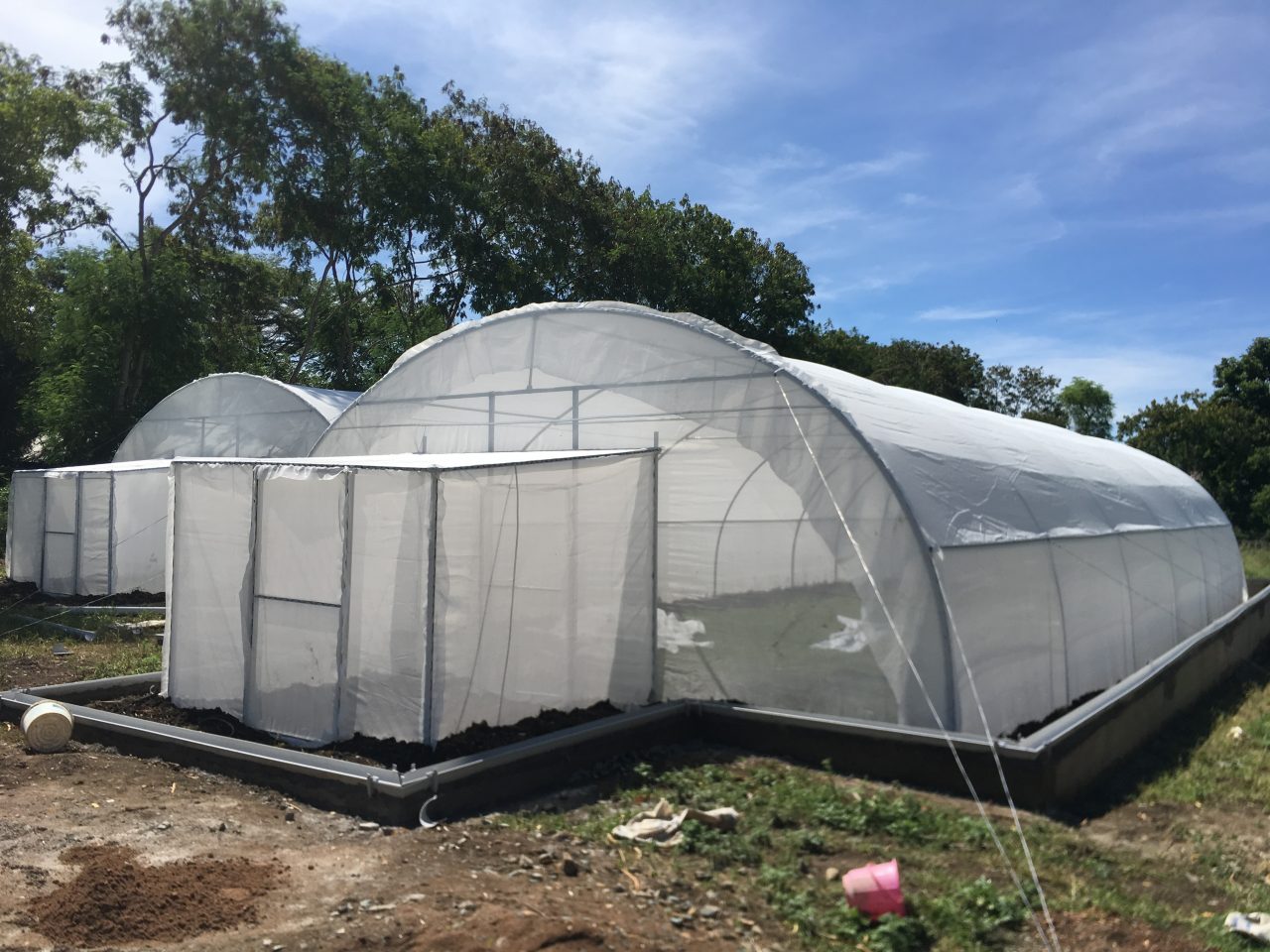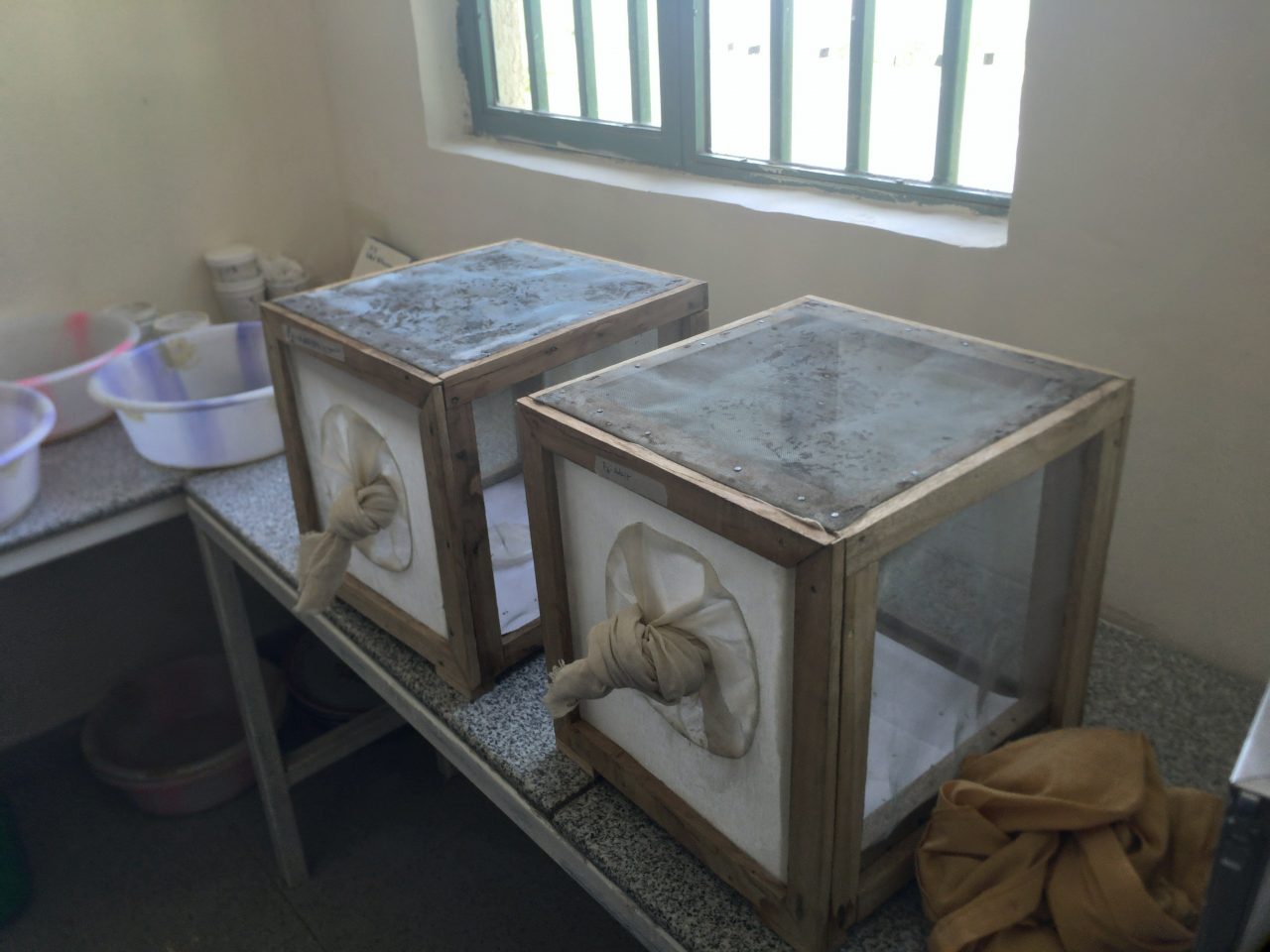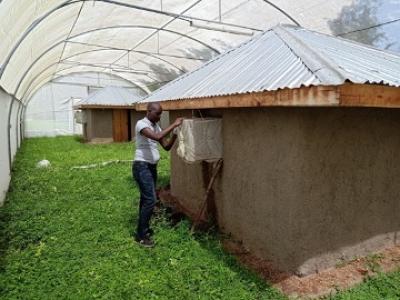Evaluation of commercial and new spatial repellents against pyrethroid-resistant malaria vectors
The current primary methods for controlling disease-carrying vectors (such as long-lasting insecticidal nets and indoor residual spraying) have significantly reduced the global malaria burden over the last decade. However, their effectiveness has diminished in Africa due to insecticide resistance and mosquitoes’ outdoor biting behavior. To enhance vector control efforts, alternative approaches like repellents and compounds that disrupt mosquitoes’ capacity to transmit the disease are being explored. Yet, it remains uncertain how well these products work against insecticide-resistant malaria vectors. The ICEMR team is conducting a study to assess the efficacy of existing spatial repellents and new technologies in reducing malaria vector populations.
In this research, ICEMR scientists evaluated spatial repellents to determine if they discouraged pyrethroid-resistant mosquitoes from entering houses using specially designed MalariaSpheres, which simulate natural mosquito habitats. Within the Malariasphere, two huts were set up: one untreated and the other treated with a candidate spatial repellent. Both insecticide-resistant and susceptible female Anopheles gambiae mosquitoes, marked with distinct fluorescent dyes, were released between the huts. Mosquitoes entering each hut were collected using MM-X traps baited with a scent mimicking human odor, allowing the assessment of the impact of spatial repellents on house entry by insecticide-resistant mosquitoes.


The study revealed three key mosquito behavior patterns: a) fewer An. gambiae mosquitoes (both susceptible and resistant) were found in huts treated with commercial repellent products, b) more resistant mosquitoes tended to enter untreated huts compared to susceptible ones, and c) commercial repellent products administered through vapor mats and liquids effectively repelled more resistant than susceptible An. gambiae mosquitoes. These findings suggest that commercially available repellent products in Africa might successfully repel even resistant strains of An. gambiae mosquitoes. This implies that these products could complement traditional vector control methods.

A technician fixes exit traps on typical African huts constructed inside a MalariaSphere. Mosquitoes that gain entry are caught using MMX traps baited with a synthetic attractant mimicking human odor.
The next phase of the study involves investigating the impact of these repellent compounds on the entry and exit behaviors of malaria vectors and their response to different repellent concentrations using bioassays in the Malariaspheres and 3D flight track analysis recorded on video. ICEMR researchers hope that the outcomes of this project will lay the groundwork for assessing whether future open-field trials are warranted to evaluate the entomological and epidemiological effects of spatial repellent strategies, particularly in light of the growing pyrethroid resistance among malaria vectors in Africa.